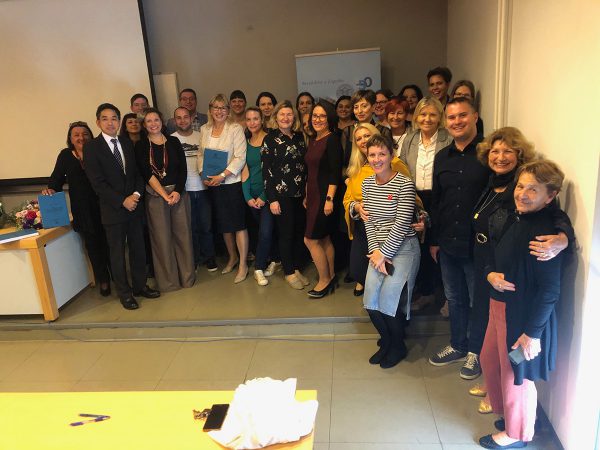Title: Surface free energy of
pretreated and finished textiles
Project type: Bilateral projects with Slovenia
Croatian coordinator: Prof. Ana Marija Grancarić, PhD
Slovenian coordinator: Barbara Simončić
![]()
Project Summary:
Free surface energy (gs) of textile materials is important interfacial phenomenon that affects the adsorption of foreign substances, whether polar or apolar. In general, (gs) is the sum of the energy stored in bonds on a surface, apolar ((gsLW) and polar (gsAB). One common way of calculating (gs) requires knowledge of the contact angle (wetting angle) of selected non-polar and polar solvents, surface tension and viscosity of the solvent and the radius of the capillary pore radius in textiles. Since the study of the surface free energy significantly depends on the construction of the textile substrate, the Faculty of textile technology explored the possibilities of cotton fabrics as defined in the construction of fabric (embroidery, warp and weft density, cover factor, yarn count of warp and weft, the number of twist yarn; types of raw materials, surface mass, collection, etc.). Selected sample of cotton fabric was pretreated at the TTF width enzymatic desizing, enzymatic and conventional boiling and bleaching. In Ljubljana the bleached material is made of 5 different dressings – oil repelling dressings, water repelling dressings, dressings against creasing and their combinations using different concentration of dressings. This has produced a number of samples of raw over pretreated to treated cotton for use which is determined by the free surface energy and other parameters that describe the state of the material and its interfacial phenomena – zeta potential, isoelectric point, point of zero charge, and the specific amount of charge. In this way achieved a complete picture of changes in surface free energy of textile, hydrophilic or hydrophobic textiles from raw state to all states during pretreating and finishing.
![]()

